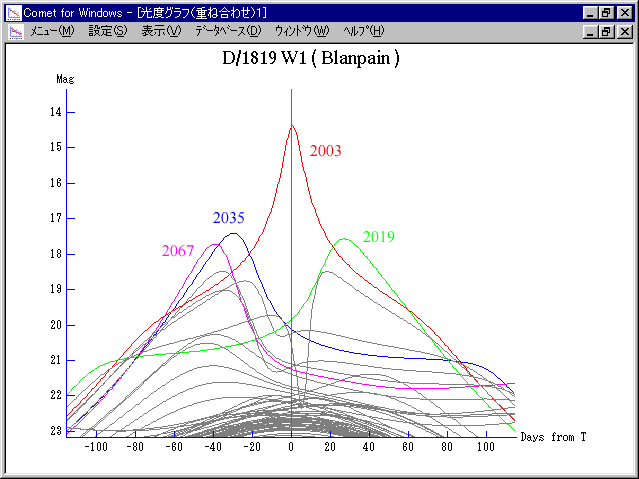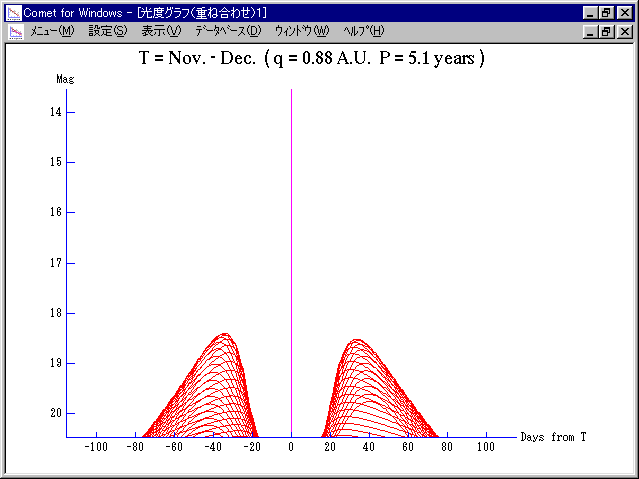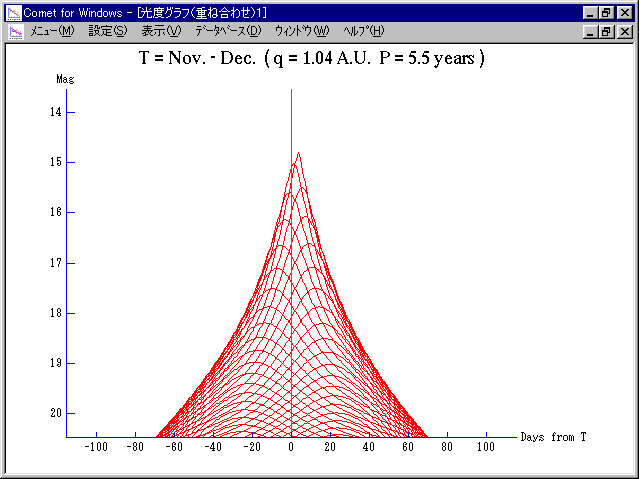289P/Blanpain
|
Japanese version Home page |
Updated on July 27, 2024 |
![]()
| ||||||||||||||||||||||||||||||||||||||||||||||||||||||||||||||||||||||||||||||||||||||||||||||||||||||||||||||||||||||||||||||||||||||||||||
| Perihelion Passage | Maximum Brightness | Nearest Distance | |
|---|---|---|---|
| 2003 | Dec. 11 | 14.4 mag | 0.025 A.U. |
| 2035 | Nov. 20 | 17.4 mag | 0.088 A.U. |
| 2019 | Dec. 20 | 17.6 mag | 0.089 A.U. |
| 2067 | Nov. 26 | 17.7 mag | 0.102 A.U. |
It was recovered in 2003 because every condition became extraordinarily excellent during recent 300 years. But it will never be brighter than 17 mag again during next about 100 years until 2109.
For about 200 years since its discovery, the condition had been bad in all returns. It had never been brighter than 18 mag. So it had been missed until 2003.
If the great outburst like in 1819 happens again, it can be a naked eye object in good condition, or at least 10 mag even in bad condition.



 Returns and Appearances
Returns and Appearances
Discovered
Appeared
Not observed
Appeared before discovery
Not observed before discovery
Returns in the future
289P 2025 Apr. 14 289P 2019 Dec. 20 289P 2014 Aug. 28 2009 Apr. 30 289P/2003 WY25 2003 Dec. 11 1998 July 18 1993 Jan. 21 1987 Nov. 23 1982 Sept.29 1977 Aug. 9 1972 June 19 1967 Apr. 27 1962 Feb. 27 1956 Oct. 25 1951 June 11 1946 Feb. 8 1940 Nov. 12 1935 Aug. 20 1930 May 29 1925 Mar. 5 1919 Dec. 9 1914 Sept. 6 1909 Mar. 26 1903 Sept.30 1898 Apr. 22 1893 Jan. 22 1887 Oct. 31 1882 Aug. 10 1877 May 19 1872 Feb. 25 1866 Nov. 26 1861 July 21 1856 Mar. 4 1850 Nov. 2 1845 Sept. 2 1840 July 9 1835 May 17 1830 Mar. 24 1825 Jan. 24 289P/1819 W1 1819 Nov. 20
![]()
The identification between D/1819 W1 and 2003 WY25 is printed on IAUC 8485 and NK 1168.
|
![]()